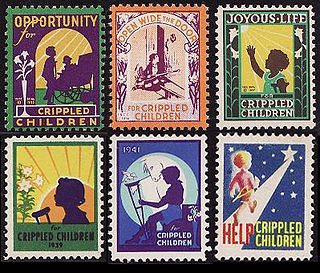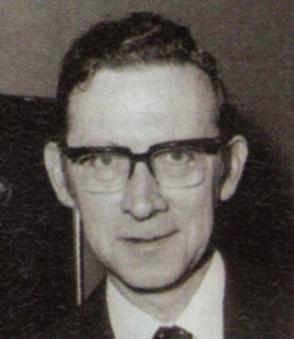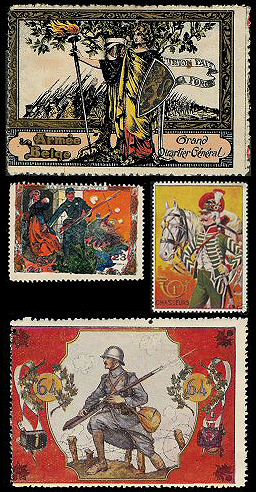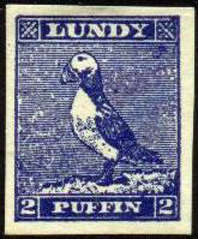This is a list of philatelic topics.

In philately, a cinderella stamp is "virtually anything resembling a postage stamp, but not issued for postal purposes by a government postal administration". There is a wide variety of cinderella stamps, such as those printed for promotional use by businesses, churches, political or non-profit groups. The term excludes imprinted stamps on postal stationery.

A revenue stamp, tax stamp, duty stamp or fiscal stamp is a (usually) adhesive label used to designate collected taxes or fees on documents, tobacco, alcoholic drinks, drugs and medicines, playing cards, hunting licenses, firearm registration, and many other things. Typically, businesses purchase the stamps from the government, and attach them to taxed items as part of putting the items on sale, or in the case of documents, as part of filling out the form.

Telegraph stamps are stamps intended solely for the prepayment of telegraph fees. The customer completed a telegraph form before handing it with payment to the clerk who applied a telegraph stamp and cancelled it to show that payment had been made. If the stamp was an imprinted stamp, it formed part of the message form.

L.N. and M. Williams were a philatelic writing partnership made up of brothers Leon Norman Williams and Maurice Williams (1905–1976).

In general, philatelic fakes and forgeries are labels that look like postage stamps but have been produced to deceive or defraud. Learning to identify these can be a challenging branch of philately.

John Harry Robson Lowe was an English professional philatelist, stamp dealer and stamp auctioneer.

The postal history of Turkey and its predecessor state, the Ottoman Empire, dates to the 18th century when foreign countries maintained courier services through their consular offices in the Empire. Although delayed in the development of its own postal service, in 1863 the Ottoman Empire became the second independent country in Asia to issue adhesive postage stamps, and in 1875, it became a founding member of the General Postal Union, soon to become the Universal Postal Union. The Ottoman Empire became the Republic of Turkey in 1923, and in the following years, its postal service became more modernized and efficient and its postage stamps expertly designed and manufactured.

James Negus was a British philatelist and book editor.

Walter Morley (1863–1936) was a pioneering English philatelist, stamp dealer and philatelic author.

Charles Nissen was a British philatelist, and stamp dealer who discovered the famous stock exchange forgery and wrote, with Bertram McGowan, the definitive book on the plating of the Penny Black.
Francis Edgar Kiddle was a British philatelist who achieved an international reputation in the field of philatelic literature and cinderella philately.

Gaston Aime Camille Fontanille, also known just as Delandre, was a French entrepreneur and conman born in Valence, the son of a magistrate.
Geoffrey Clive Akerman was an English philatelist. In 2001, Akerman and Gavin H. Fryer won the Crawford Medal from The Royal Philatelic Society London for their work "The Reform of the Post Office in the Victorian Era and Its Impact on Economic and Social Activity". He won numerous other awards for displays at stamp exhibitions. In 2009, Akerman won the Revenue Society Research Medal.

The Fiscal Philatelic Society was an early twentieth-century British philatelic society that is seen as a predecessor to today's The Revenue Society. The principal object of the society was the study of fiscal stamps, or, as they are more usually called today, revenue stamps.

The Chinchen Collection is a collection of stamps, proofs, artwork and covers from Lundy Island donated by Barry Chinchen to the British Library Philatelic Collections in 1977 and is located at the British Library.

Alexander Berridge Kay was the founder, with E.J. Bridger, of the stamp dealers Bridger and Kay in 1897 or 1898 and a leading figure in the Fiscal Philatelic Society. In 1910, Kay identified used copies of the Italian forgery of the British grey-green Victorian 10 shilling stamp watermarked anchor and perforated 14. His letter to The London Philatelist, published in November 1910, warned the philatelic community of its existence.
The Campbell-Johnston Collection is a collection of poster stamps that forms part of the British Library Philatelic Collections. It consists of 30 large green albums.
Wolfgang Baldus is a German graphic designer, artist, and philatelic writer. He is known for authoring and publishing books on cinderella stamps in the series History and Background Stories of Unusual Stamps and for his works on the philatelic forgeries and propaganda parodies produced by both sides during the First and Second World Wars.
John Barefoot is a British philatelist, stamp dealer, and publisher, best known for his catalogues of revenue stamps which are known collectively as the "Barefoot catalogue".














